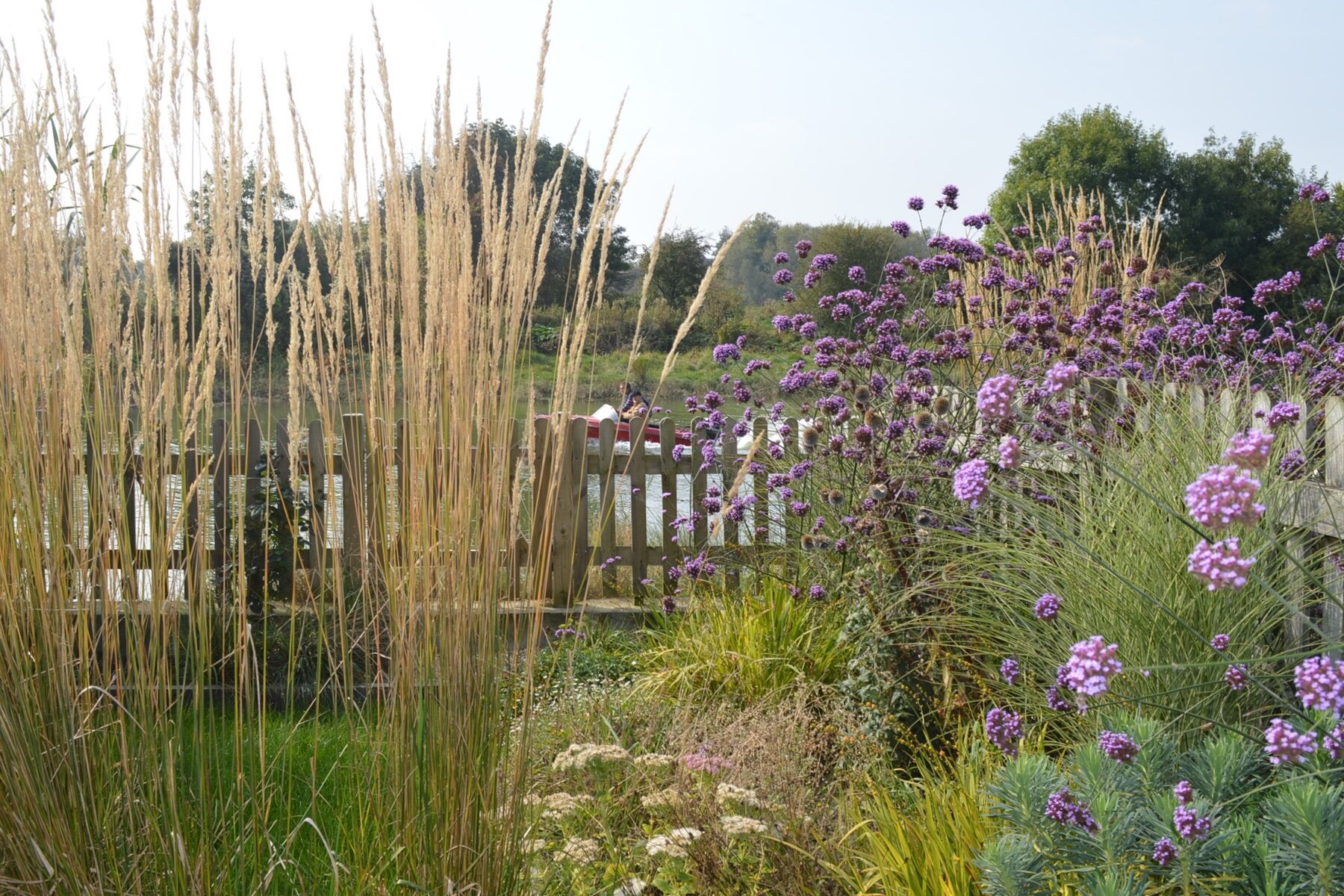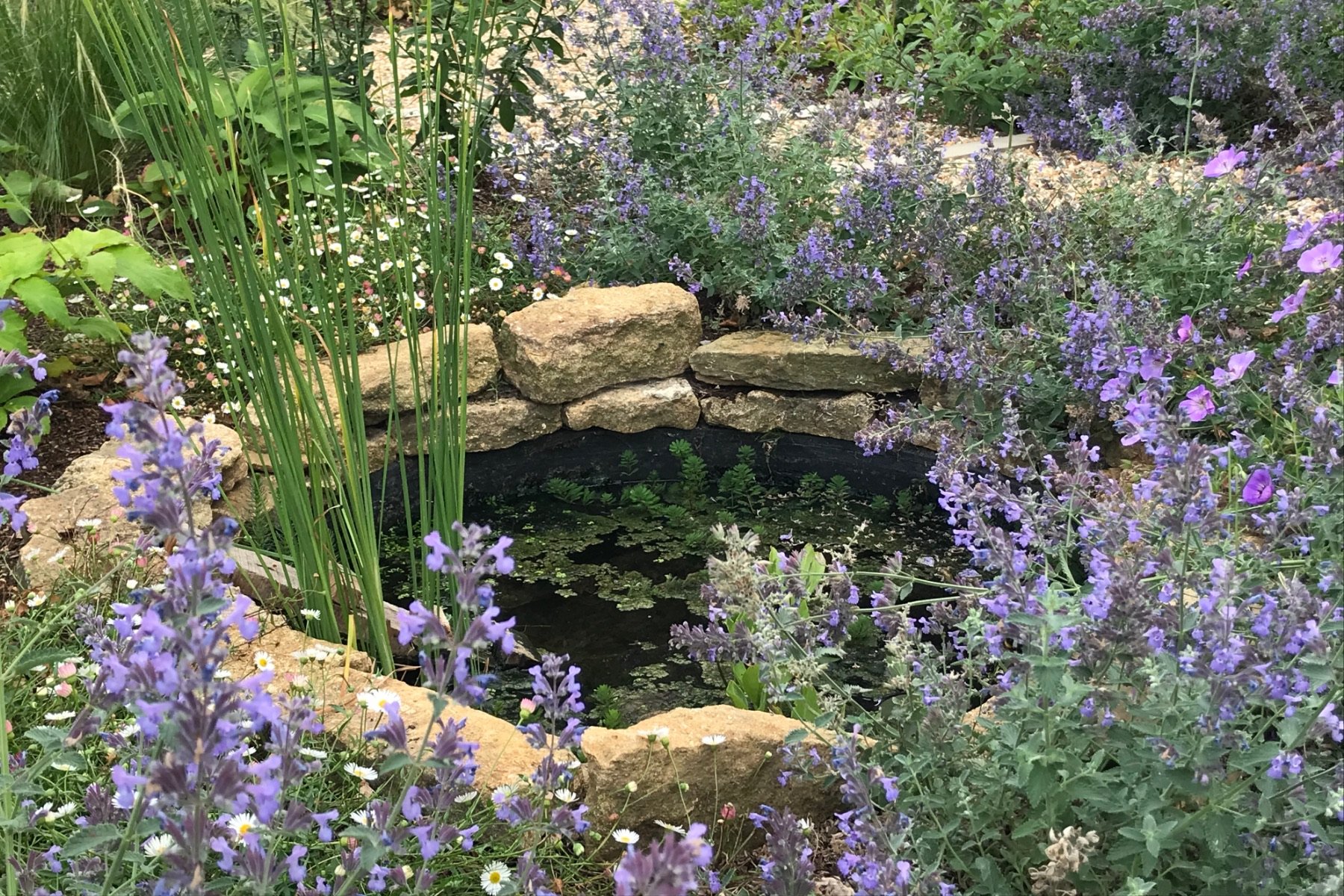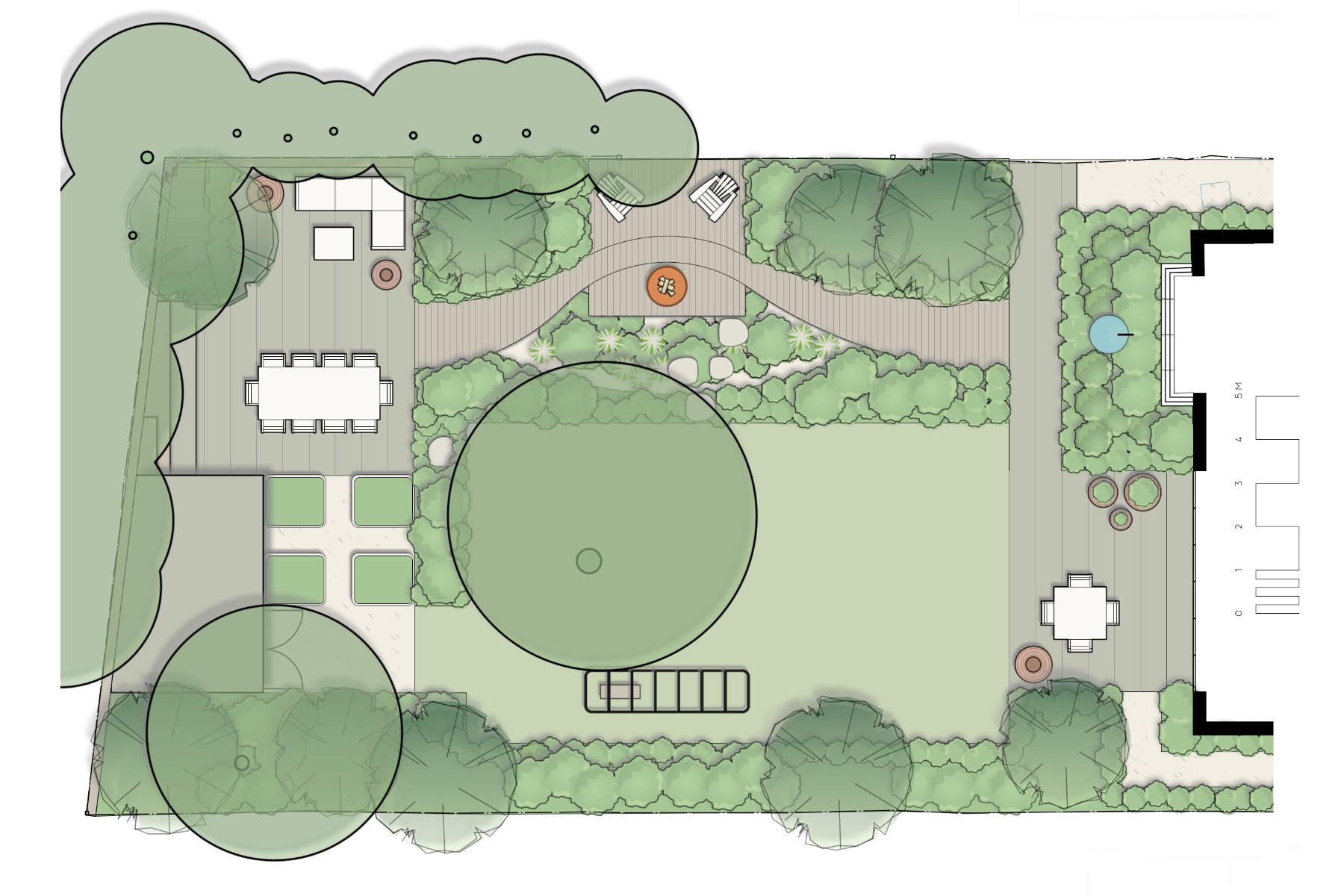Our Sustainable Design Principles
Introduction
As a Garden Design Studio we are constantly striving to implement designs in which environmental sustainability comes first. We always aim to design with a light touch, with a focus on minimising negative environmental impacts and maximising positive outcomes such as biodiversity, conservation of resources and resilience to the impacts of climate change.
We will engage with our clients, partners, contractors, collaborators and suppliers in the industry to promote awareness and implementation of sustainable garden design practices. We will also network and pursue educational opportunities in order to ensure that we continue to apply best practice approaches in sustainable design.
Maximising Gains
We make the most of all opportunities including designing front gardens for wildlife. Small ponds (in front gardens) can make the difference and increase diversity. Adding habitats is something we do well.
Principles
1. Conservation of resources. We:
a. Retain all beneficial trees, hedges and shrubs, replacing only in specific circumstances.
b. Maximise the reuse of hard landscaping materials on site
c. Minimise soil excavation and groundworks and minimise the amount of soil imported to site.
d. Design for longevity through using durable materials and planting, whilst designing in future adaptability.
Smart Plant Choices
Our plants are sourced from local nurseries and peat free growers. We specify native species and plants for wildlife, creating borders with high plant diversity as well as structural diversity.
2. Responsible sourcing of plants. We:
a. Choose plants not just for their ornamental benefits, but also for the environmental benefits they deliver, including habitats and microhabitats, nesting, food, shelter, hibernation, nectar, medicinal benefits, erosion control, soil health, water management, and pollution control.
b. Maximise the use of native plant species that thrive and survive in the local soil and climate conditions of the site.
c. Take account of the embodied carbon and other environmental impacts of the plants we purchase, as data allows, e.g. through prioritising local sourcing and organic growing methods.
d. Take account of the carbon sequestration potential of plants, as data allows, e.g. through the use of carbon labels in the Barcham Tree Directory.
e. Only use peat free compost and organic soil improvers where needed.
Sustainable Sourcing
We pay attention to the origin and certification of materials, and aim to use traditional build methodology where we can.
3. Responsible sourcing of hard landscape materials. We:
a. Minimise the use of concrete, glass and metals.
b. Specify reclaimed timber and landscape materials where feasible.
c. Source gravel from land-based rather than marine-based operations and use recycled gravels where possible.
d. Take account of the embodied carbon and other environmental impacts of the materials we specify, as data allows, e.g. through prioritising local sourcing and choosing durable materials.
e. Exclude the use of plastics, artificial turf and porcelain in our designs.
f. Ensure all non-reclaimed timber is FSC-certified and exclude the use of virgin tropical timber.
Retaining Wilder Spaces
By leaving areas in the garden well alone, wildlife is encouraged to stay, and hopefully welcomed in. These areas are significantly important, however large or small - from log piles, to woodlands: They all count.
4. Promoting wilder spaces: We:
a. Actively promote the addition of semi-natural habitats and wilder and less maintained areas of the garden.
b. Aim to design gardens, which have a maximum 20/80 ratio of hard to soft landscaping to promote biodiversity, reduce surface water run-off and reduce resource use.
c. Create habitats for bats, birds, bees and reptile/amphibian hibernacula and refuges wherever possible. Every garden will include a minimum of 1 constructed refuge/nesting place.
d. Establish and encourage wildlife corridors between gardens and landscapes
e. Promote the use of Dark Skies compliant lighting and ensure thoughtful lighting designs which serve safety, functionality, and aesthetic purposes while minimising disruption to wildlife habitats.
Rain Garden
A Seasonally flooded garden with on-site water storage and Rain Garden to enhance the attenuation of flood water downslope.
5. Promoting climate resilience. We:
a. Design for water conservation by reducing water consumption in creation and maintenance.
b. Incorporate water storage systems, green roofs, rain gardens and natural water ponds and pools where possible.
c. Construct hard landscape surfaces on a permeable construction where possible (this is dependent on factors such as soil and bedrock type).
d. Design in shade trees, green roofs, and optimise materials choices and other cooling strategies when designing gardens in the urban landscape.







